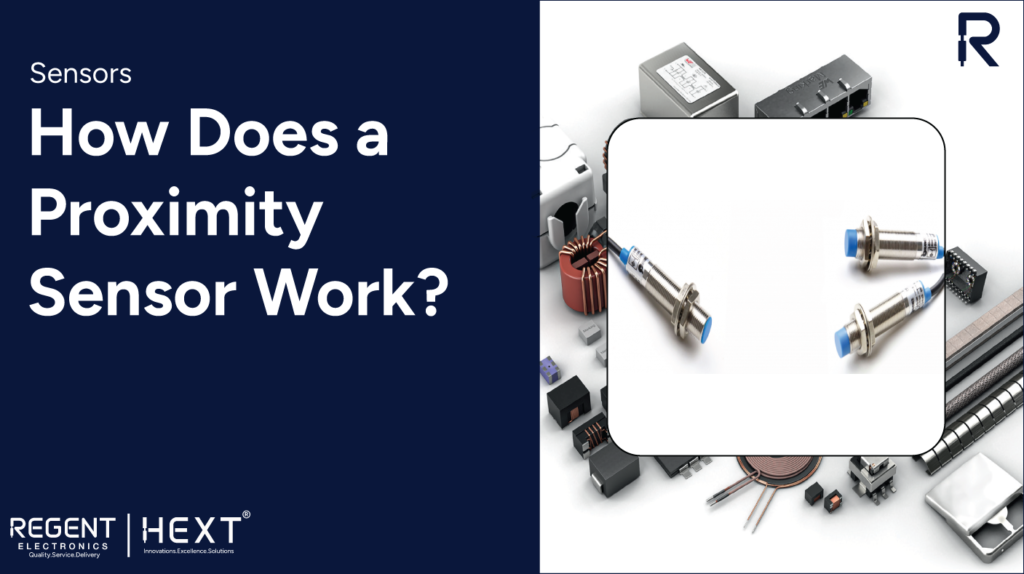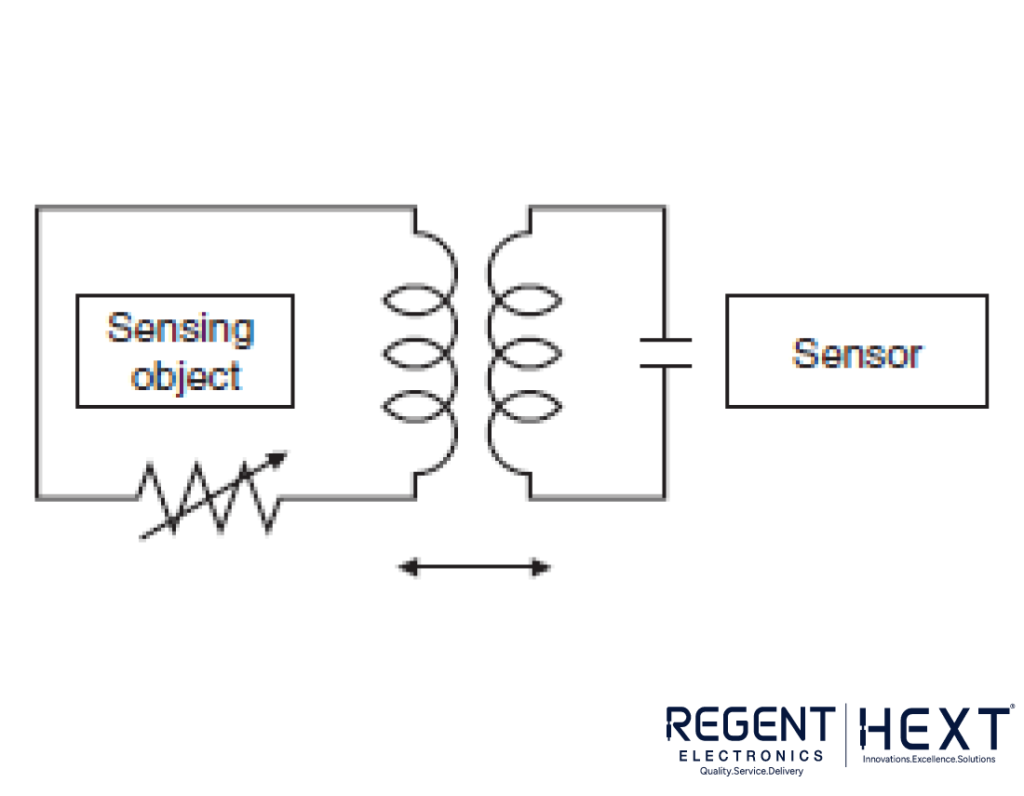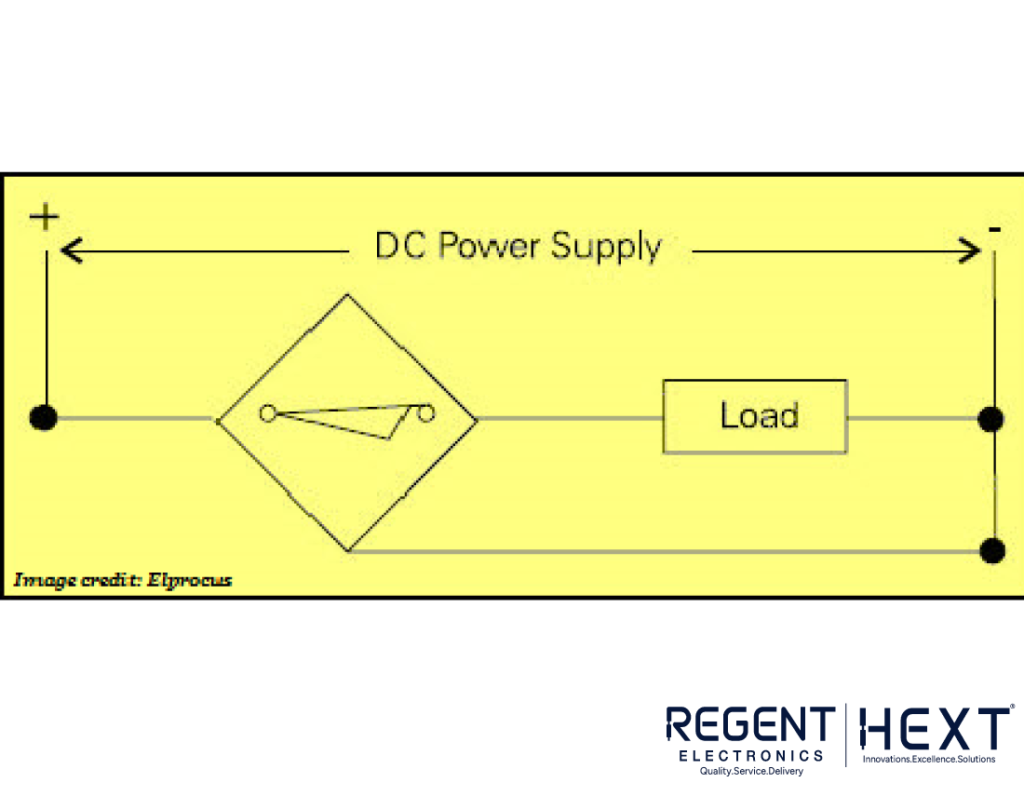
How Does a Proximity Sensor Work?
In this article, we will explore proximity sensors in detail, including their features, working principles, and applications.
What is a Proximity Sensor?

A proximity sensor is a device that detects the presence of nearby objects without making any physical contact. This is achieved using an electromagnetic field or an electromagnetic radiation beam, which changes when an object enters its range. The detected object is referred to as the target.
Proximity sensors, also known as proximity switches, operate based on a transformer-like relationship between the sensing object and the sensor. Due to the absence of mechanical components and direct physical contact, these sensors offer high reliability and extended operational life.
Proximity sensors are available in different models:
- High-frequency oscillation models for detecting ferrous and non-ferrous metals.
- Capacitive models for detecting non-metal objects.
- Models resistant to environmental conditions, chemicals, heat, and water.
Features of a Proximity Sensor

To understand proximity sensors better, let’s take a look at their key features:
- Contactless Sensing
Proximity sensors detect objects without physical contact, preventing wear and tear or damage. Unlike limit switches that require contact, proximity sensors work through electrical detection. - Unaffected by Surface Condition
These sensors detect objects based on physical changes rather than surface color, making them highly effective regardless of an object’s color or texture. - Wide Range of Applications
Proximity sensors function effectively in damp conditions and a broad temperature range (-40°C to 200°C). They are commonly used in smartphones, such as Android and iOS devices, utilizing infrared (IR) technology to turn off the display during phone calls. - Longer Service Life
With semiconductor-based outputs and no moving parts, proximity sensors last significantly longer than traditional mechanical sensors. - High-Speed Response
These sensors provide faster response times compared to mechanical switches that require physical contact. - Resistant to Environmental Factors
Unlike optical detection methods, proximity sensors perform efficiently in locations exposed to water, oil, or dirt. Some models feature fluororesin casings for superior chemical resistance. - Consideration of Surrounding Objects
Unlike physical switches, proximity sensors can be affected by ambient temperatures and surrounding objects. Both inductive and capacitive proximity sensors can experience interference from nearby sensors or metallic objects, necessitating careful placement.
How Does a Proximity Sensor Work?

The wiring of a proximity sensor circuit determines its operation. Based on the presence or absence of a target, proximity sensor outputs can be categorized as:
- Normally Open (NO): The output remains low/off when no target is detected.
- Normally Closed (NC): The output remains high/on when no target is detected.
Proximity Sensor Circuit and Target Size

A standard target has a smooth, flat surface with a 1mm thickness and is made of mild steel, which consists of iron and carbon.
- Shielded sensors: The standard target’s sides are equal to the diameter of the sensing face.
- Unshielded sensors: The standard target’s sides are equal to either the sensing face diameter or three times the rated operating range, whichever is greater.
If the target is larger than the standard size, the sensing range remains unchanged. However, if the target is smaller or irregularly shaped, the sensing distance decreases. Smaller targets must be positioned closer to the sensor for detection.
Proximity Sensors in Smartphones
Modern smartphones commonly use proximity sensors, particularly IR-based sensors. These sensors emit infrared radiation, which bounces off nearby surfaces. An IR receiver detects the reflected rays, and based on their intensity, the sensor determines the proximity of an object.
If a high-intensity reflection is detected, it indicates the presence of an obstacle or surface nearby. These sensors are typically digital but can sometimes be analog.
Conclusion
Proximity sensors offer a reliable, contactless way to detect objects and are widely used in various industries, from industrial automation to consumer electronics. Their long service life, high-speed response, and environmental resistance make them ideal for multiple applications.
We hope this article has helped you understand proximity sensors, their working principles, and their features. If you have any questions, feel free to ask in the comments!
